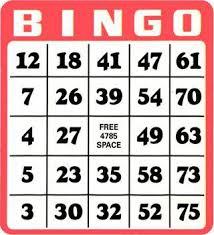
Are your salespeople prepared to win in the market they face today? Are you sure? Market leaders are taking the time to clearly understand their markets, their problems, buyers, and buying process to make purchases. Market losers plan to work harder, doing more of what they have been doing that did not produce results. Losers believe it’s just an “execution problem” a “motivation problem” so they plan to “manage” their sales team’s activities even closer. Market leaders are getting their teams in shape for the market of today.
In March of 2009 I decided I needed to get in shape. Years of traveling two to three nights per week, poor food choices and lack of exercise and I found me in the worst shape I have ever been in. It was not something that happened over night, but over a long period of lack of focus. So the first thing I did was get moving. I started working out like a maniac. I took spin classes at 4:00 am and then I would lift weights and end my workouts on the elliptical machines. This went on for months, and although I did have more energy, I was not losing weight.
More Activity alone was not producing my desired results.
So I attacked this like a business problem; I started doing research. I found that I fell into the same trap many people assume when trying to get healthy; activity drives healthy results. Therefore we assume more activity should produce even more desired results right? Wrong! The more I read I learned that 65% of your health is determined by the food you consume (inputs) and 35% is activity (execution).
I was focused on activity with little attention to what I was consuming, what was going into my body. I found with the right focus on inputs, you don’t need to have 2-2 ½ hour workouts. A strong workout of 40-60 minutes produced greater results. Within twelve months I lost 80 pounds, became healthier, and I now have more energy and more time.
I find many businesses try to fix unhealthy sales results by demanding more activity without focus on key inputs.(strategy)
Managers quickly direct their sales teams to more activity although the current activity is not driving the desired results. (Einstein’s definition of insanity)
Just as there is a proven formula for creating a healthy body, I have found a similar model to create healthy sales teams that drives profitable sales growth.
65% of your profitable sales performance is driven by strategy (inputs)
35% of your profitable sales performance is the result of sales team execution (execution)
(Ironic most of us have this backwards…)
Strategy
To insure your salespeople are equipped to be effective and efficient in the market of today you must have a clear understanding of your market, market problems of today, and map how your buyers buy today. These inputs will strengthen the core of your sales team performance with a power that the majority of your competitors do not have.
So how do you get started?
Get out in the market
Ask open-ended questions
Meet with customers and those who you did not sell
Identify the problems they face today
Equip sales with a value proposition that resonate with buyer needs of today
Map the buying process buyer’s use
Create a sales process that mirrors how your buyers are buying today
Develop sales tools for areas in the buying process where the sale grows dark and stalls
Constantly review the buying process and adjust your sales process, add tools as needed
Activity
Once you clearly understand how your buyers are buying, how they are making buying decisions today, equip your sales team with a new sales process and tools. Manage their activity using the sales process that mirrors how buyers want to buy.
“Your focus must be on how your buyers want to buy and not on how you want to sell.”
How do we execute new sales process?
Share the buying processes you discovered with salespeople
Train your sales team with the sales process you developed to serve how your buyers are buying
Teach your salespeople how to, and when to, use the new sales tools you created
Create sales tools that share the problems you solve in the markets voice
Create key performance indicators that measure key steps in the sales process
Constantly assess your new defined sales process for areas the sale seems to go dark
Lead your sales team by managing sales opportunities through the defined sales process steps
Identify salespeople who may need additional, individualized training, or may not be embracing new process
The core strength of your sales team’s performance is based on clearly understanding your market…stay close to buyers
Applying a sales process that supports how your buyers want to buy will produce healthily results in sales revenues and profits.
“If you have not changed your sales process in the last 6 months it’s broken.”
“If you have not produced new sales tools in the last three months, you are losing sales you could be winning.”
How about your team?
Do you clearly understand the problems your buyers are facing today?
How are your buyers buying today?
How do your buyers shop today?
Who is involved in the buying decision, and what additional information do they require?
What problem does your product or service solve for your market?
Market leading sales teams understand their buyers, buying criteria, and how they want to buy. They design sales processes that mirror how buyers want to buy and they equip their sales teams with sales tools to help buyers buy.









